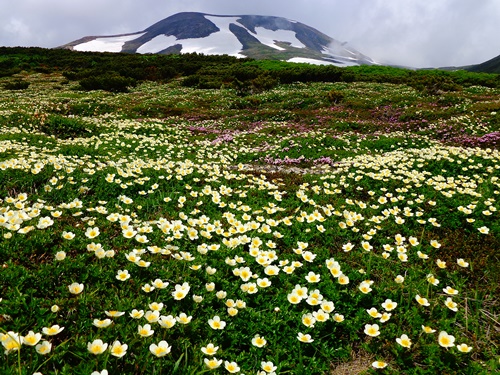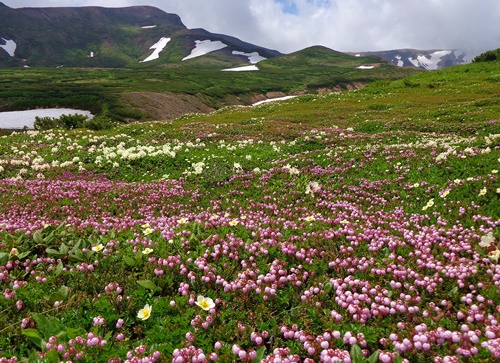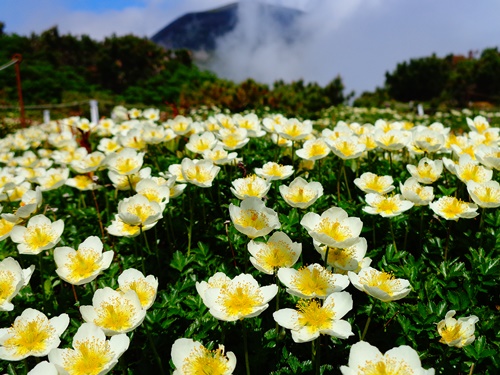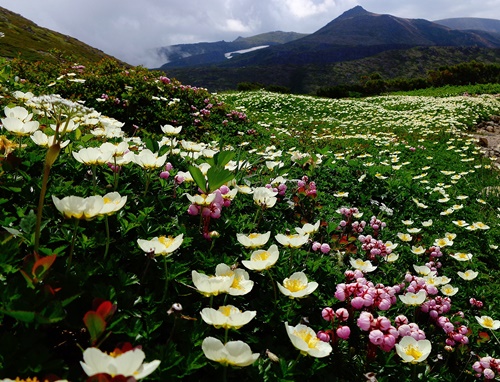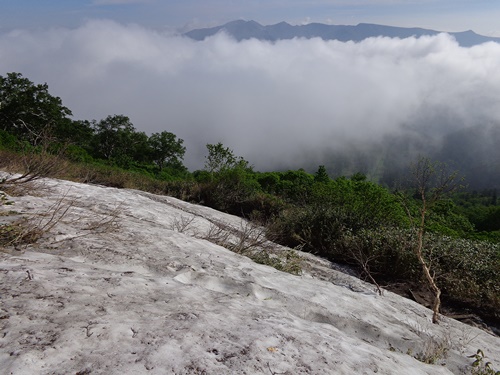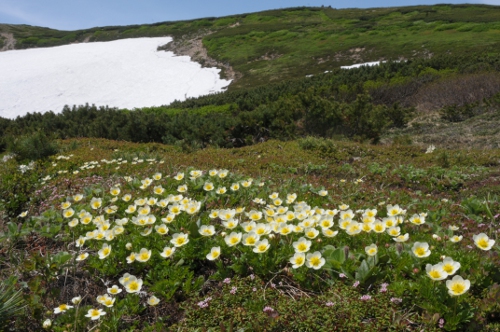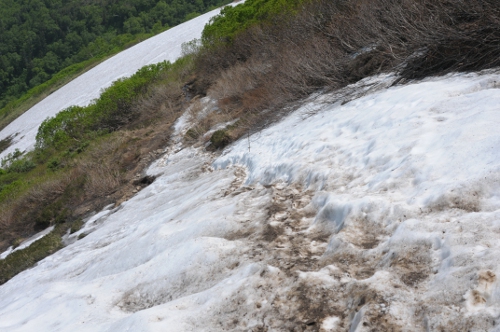In a previous report (July 4), I mentioned that the Rhododendron aureum had formed communities and were nearing their best viewing season. However, when I went out to Kumonotaira, I was left speechless for a moment.
The communities that were so vibrant just three days ago are now approximately 70% wilted.
Some of the plants are still blooming, of course, but they probably will not last long in this heat.
Meanwhile the Sieversia pentapetala and Phyllodoce caerulea that began blooming earlier are now approaching their end.
However, as can be seen in the photos, there are other areas where the flowers are still at their most beautiful. Some plants are still budding, and we can expect the weather to bring those flowers out, too.
Photos: Near Kumonotaira Jul. 8
The communities that were so vibrant just three days ago are now approximately 70% wilted.
Some of the plants are still blooming, of course, but they probably will not last long in this heat.
Meanwhile the Sieversia pentapetala and Phyllodoce caerulea that began blooming earlier are now approaching their end.
However, as can be seen in the photos, there are other areas where the flowers are still at their most beautiful. Some plants are still budding, and we can expect the weather to bring those flowers out, too.
Photos: Near Kumonotaira Jul. 8
